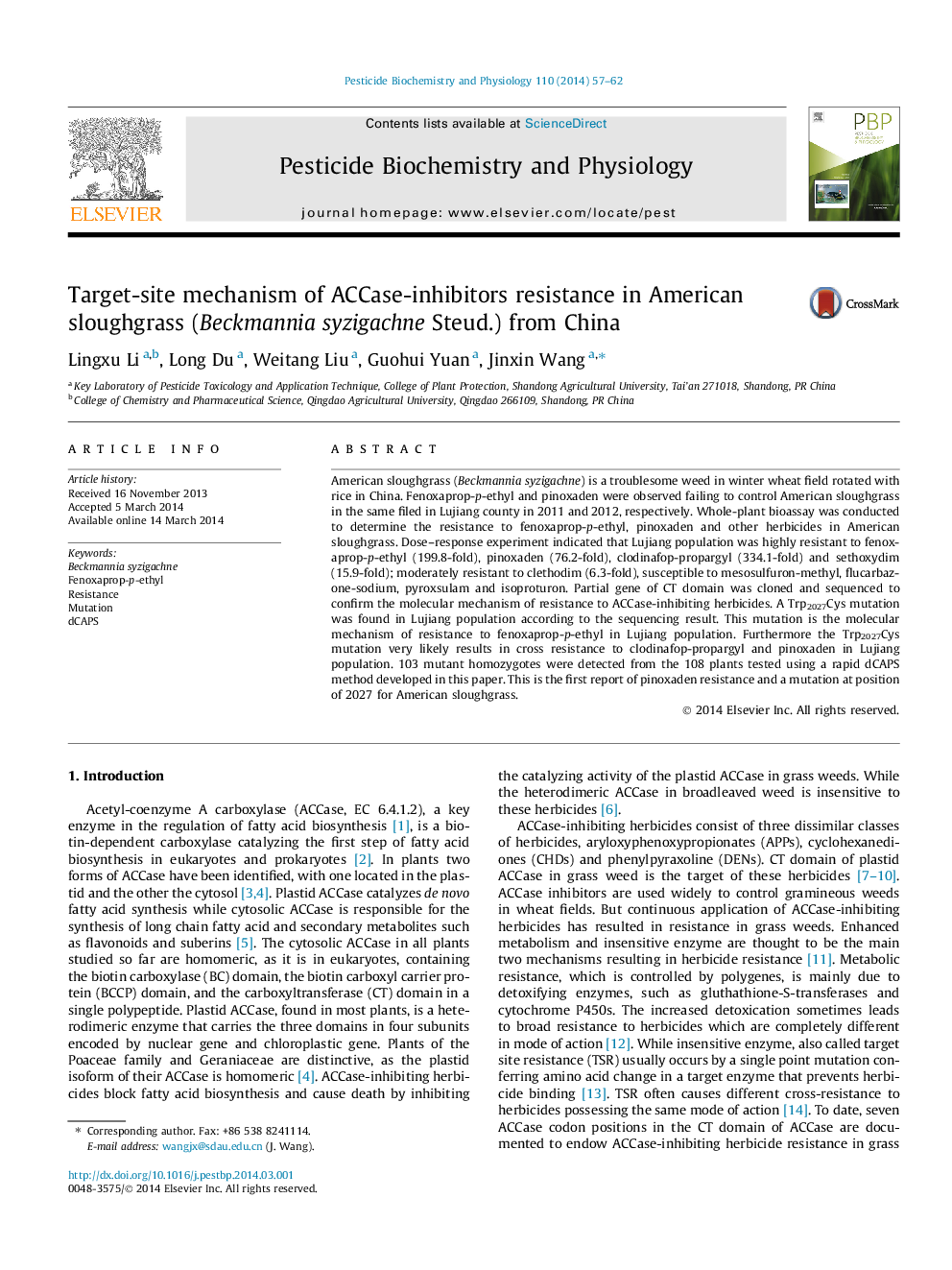| کد مقاله | کد نشریه | سال انتشار | مقاله انگلیسی | نسخه تمام متن |
|---|---|---|---|---|
| 2009261 | 1541789 | 2014 | 6 صفحه PDF | دانلود رایگان |

• Lujiang population was 199.8/76.2-fold resistant to fenoxaprop/pinoxaden.
• A Trp2027Cys mutation was found in CT domain of ACCase of resistant population.
• The Trp2027Cys mutation was the molecular mechanism of resistance to fenoxaprop.
• A rapid and accurate dCAPS method was built to detect the 2027Cys mutation.
American sloughgrass (Beckmannia syzigachne) is a troublesome weed in winter wheat field rotated with rice in China. Fenoxaprop-p-ethyl and pinoxaden were observed failing to control American sloughgrass in the same filed in Lujiang county in 2011 and 2012, respectively. Whole-plant bioassay was conducted to determine the resistance to fenoxaprop-p-ethyl, pinoxaden and other herbicides in American sloughgrass. Dose–response experiment indicated that Lujiang population was highly resistant to fenoxaprop-p-ethyl (199.8-fold), pinoxaden (76.2-fold), clodinafop-propargyl (334.1-fold) and sethoxydim (15.9-fold); moderately resistant to clethodim (6.3-fold), susceptible to mesosulfuron-methyl, flucarbazone-sodium, pyroxsulam and isoproturon. Partial gene of CT domain was cloned and sequenced to confirm the molecular mechanism of resistance to ACCase-inhibiting herbicides. A Trp2027Cys mutation was found in Lujiang population according to the sequencing result. This mutation is the molecular mechanism of resistance to fenoxaprop-p-ethyl in Lujiang population. Furthermore the Trp2027Cys mutation very likely results in cross resistance to clodinafop-propargyl and pinoxaden in Lujiang population. 103 mutant homozygotes were detected from the 108 plants tested using a rapid dCAPS method developed in this paper. This is the first report of pinoxaden resistance and a mutation at position of 2027 for American sloughgrass.
Figure optionsDownload as PowerPoint slide
Journal: Pesticide Biochemistry and Physiology - Volume 110, March 2014, Pages 57–62